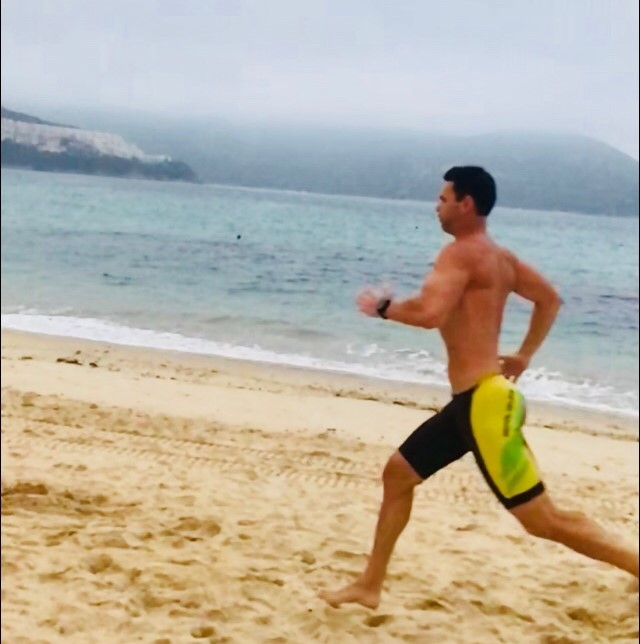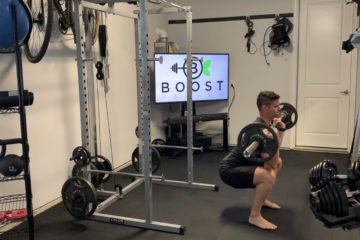
I will admit I get excited about lots of “P words”. Processes, procedures, protocols, project management, and productivity are all wonderful! I like spreadsheets, organization, order, and systems. I like things I can control and improve with knowledge and practice. I get a little restless when things are out of my control. I wondered if this is a product of nature or nurture. Then I thought through my genetic background and realized it was probably both!
My dad was an officer in the Air Force and he shared his love of protocols with his us including how to load a dishwasher, how to pack a car with suitcases, and how, if you were not early to an appointment, you were late. Was he wired this way or did being in the military shape him? I asked my mom if he was into systems and procedures when she met him. They were 19 and at university so she got to know him before he was in the Air Force, and she said he was already process based. My sister definitely seems to have a similar wiring to me. Also my dad’s father, my grandfather, was career Navy, and also loved systems and protocols. It seems we didn’t have a chance to be any other way! I mention all of this because I think it explains why I am so passionate about a morning routine and why having one is essential to my sanity. But even if you are not a crazy process based enthusiast like me, there are still a lot of reasons to build yourself a good morning routine and stick to it. Below I share 10 morning routine tips that will set you up for the best day ever, every day.
1. Be an Early Bird
I haven’t always gotten up early. I remember at university that I would thoughtfully and purposefully set my class schedule to allow the most time to sleep in. I did some personal training while at KU but always set my schedule for evening clients. In fact it wasn’t until after university that I started getting up fairly early. I worked as a personal trainer and wellness program manager in Southern California, and I quickly learned that many folks wanted to get their workouts done for the day early and I needed to become a morning person fast!
Then after getting into a somewhat “forced” routine of getting up early, I realized what I was missing all those years. I began doing some workouts before for my first client or my first fitness class of the day. I noticed how it made me feel great for the rest of the day and how much more productive I was. It is an amazing sense of satisfaction to know that you have your workout done for the day and you don’t have it hanging over your head to try to squeeze in later. The kids are still sleeping, there are no unexpected work meetings, and the roads are quiet. A study done by researchers at the University of Leipzig found that morning people (those who wake up early) are more productive than night owls. This makes sense as it is just a lot easier to get things done at this time. You start your day off with positive production instead of a stressful scramble.
2. Check Your HRV
I go into detail about the benefits of consistently tracking your Heart Rate Variability (HRV) first thing in the morning in episode 4 of the blog and podcast titled “Listen to Your Body”.
I also explain how to get started if you are new to tracking HRV. Basically, tracking your HRV regularly will help you understand what your baseline stress is and whether or not your body is able to train at a high level, a moderate level, or needs recovery. It is essential to understand this at the beginning of your day, especially if you are going to exercise in the morning. Body awareness is powerful because you know what hand you have been dealt for that day. It is a lot easier to hit a curve ball if you can see it coming. If your HRV is in the tank that morning then you can do an easy zone 2 jog instead of sprint work, for example.
3. Be Smooth
Military special forces have a saying which is “slow is smooth and smooth is fast”. This phrase is how I approach all the little things I need to do before I warmup for my morning workout (hint for tips 4 and 5). I wake up about an hour before my workout begins to give myself plenty of prep time. I find when I rush with morning prep I forget or miss something. The motto of “slow is smooth and smooth is fast” goes through my head as I complete my morning tasks efficiently but not in a stressed or rushed state. When the alarm goes off, I need to check the aforementioned HRV, wash hands, put in eye contacts, brush teeth, void the bowels and bladder, wash hands again, drink a glass of water with 5 grams of master pattern amino acids (keeps you in fasted state and protects from muscle breakdown), drink some black coffee, check the weather, prep gear for that particular workout (i.e. air up bike tires, put on bike lights, get water bottles, etc.), and put on gear for that particular workout (i.e. running shoes, bike helmet, swim trunks, etc.). Call me slow, but all that takes me about 45 minutes. Then I have approximately 15 minutes to do a dynamic warmup and get outside for the workout. The link for the MAP aminos I use is below on Amazon.
4. Dynamic Warmup
I did an entire blog, podcast episode, and video on proper dynamic warm up so I won’t go into the full detail here. You can check out the blog here, podcast episode here, and dynamic warmup video here.
The basics of it, however, are that static stretching before you workout is a big “no no” as it can decrease force production in your muscles. This is not what you are looking for in sport or workouts. Dynamic warmups have been shown to improve performance in numerous ways including peak torque, force production, and agility. A, don’t skip your warmup, and B, do a proper dynamic warmup.
5. Do Cardio
It is nice to exercise in the morning before the hustle and bustle of the day begins. You also don’t have to worry about energy levels and eating before your workout as you can just train fasted first thing in the morning. I covered intermittent fasting benefits in my blog and podcast titled “5 Nutrition Tips for EVERYONE”.
Also doing exercise in the morning, specifically cardiovascular exercise in a fasted state, has numerous benefits. A 2010 study in The Journal of Physiology showed that cardiovascular training, cycling and running in this case, in a fasted state is better for preventing weight gain, facilitating muscle adaptations, improving insulin sensitivity, and improving glucose tolerance than exercising in a fed state.
6. Take a Natural Shower
Have you looked at the back of your shampoo bottle and body wash container? Some products have quite the interesting concoction of chemicals and ingredients. We should think of our skin as a second mouth, since much of what we put on our skin absorbs into our blood stream. For the most part if you wouldn’t eat it, it may not be a great idea to put on your skin. I like a natural soap by Tom’s of Maine. It is made with raw shea butter, has no artificial fragrance, it is sodium lauryl sulfate-free, phthalate-free, butyl paraben-free, formaldehyde donor-free, formaldehyde-free, nonylphenol ethoxylate free, and propylparaben-free, and does not use animal testing. I use it for both my body and hair. I told you I am a caveman! Here is the link for it if you want to check it out on Amazon:
I won’t talk about shower temperature here other than you should try to avoid scolding hot showers. Hot showers dry out your skin and leave your pores wide open. I have personally been experimenting with cold showers for a while now, but there is too much conflicting evidence in the research at this time for me to feel comfortable recommending it. There are claims of cold showers assisting with fat loss and immunity boost, for example, but more studies need to be done.
7. Journal
After I drop my kids off at school, I walk home. It is about a 1 mile, 20 minute walk. I like to use this time for journaling, capturing new ideas, and planning my work day. I use Evernote and voice dictation for this and it works wonderfully. I enjoy the nice quiet walk and sometimes stop by the beach for a few minutes if the weather is nice. I use this time as my transition from exercise and family time to work mode. When I get home I have a strong plan for the work day ahead, I have listed things I am thankful for, have reflected on recent events and accomplishments, and I may even have some innovative ideas.
According to an article on happierhuman.com there was a fantastic analysis that was compiled by aggregating data from 40 different research studies on gratitude, and among the numerous benefits included how a 5 minute daily gratitude journal can improve long term health by 10 percent! It also can help with career, emotions, relationships, productivity, decision making and more. Not a bad return on investment for 5 minutes!
8. Do the Hardest Thing First
I like how Benjamin Hardy, in his 2017 article on morning routines, talked about “protecting your mornings”. He mentions that part of protecting your morning is using your first 90 minutes of your work day to tackle your number 1 priority, and this shouldn’t include checking your email or social media. The number 1 priority should be an output work instead of taking in information. Output of finishing slides for a presentation versus input of reading emails is a good example.
I have actually been applying this “hardest thing first” rule for several years now with my work day. I have found I have the most success when I keep my email tab closed and keep my mobile phone in another room to eliminate distractions. This was especially useful when I was researching and writing papers during my MBA program, and now when I am writing a blog post. It is amazing how long you can get sidetracked when you see an email pop up or hear that little buzz on your phone. I get an incredible amount of work done in that first 90 minutes. It is focused, energized, and uninterrupted. Give it a try!
9. The 2 Minute Rule
I love the 2 minute rule! I can honestly say it has changed my life. It affects how I operate with work tasks and with daily life. Productivity expert David Allen discusses the 2 minute rule in his book “Getting Things Done: The Art of Stress-Free Productivity” and says that tasks that take 2 minutes or less should be done right away as it will take more time to store, organize, and review later. Here is the link to the book on Amazon if you are interested to learn more.
One important thing to note is when to use the 2 minute rule. It should be used during processing time like reviewing emails or checking your to do list. If you are working on a big project that needs full focus, don’t let yourself pop out and do 2 minute drills. Stay focused on your project and set aside time later to do processing work where you can apply the 2 minute drill. I like to apply the aforementioned “hardest thing first” rule to my routine using the first 90 minutes of my work day for a difficult and concentration task and then use the next hour or so to focus on 2 minute drills for my to do list, emails, and social media.
10. It Starts the Night Before
Is planning a bit the night before really that big of a deal? I dare say yes! It has happened to all of us – you go to bed with intensions of getting up early in the morning for exercise but convince yourself you are too tired to plan for it. You don’t set out any of your workout gear, you don’t tell anyone you are going, you don’t check the weather, you don’t charge your workout devices, etc. Then the next morning you wake up, see it is surprisingly cold, and you don’t know where all your cold weather gear is. You also forgot to charge your GPS device and it is on 1%. You also didn’t set up a rendezvous with a workout buddy. No one will know, let’s just go back to bed. Sound like a familiar story? Having an amazing, healthy, and productive morning can probably happen without planning but they happen a lot more often for me if I take the time to make bulletproof plans the night before.
Check the forecast and plan accordingly. For example we don’t tend to cycle when it rains here on Hong Kong Island. The roads are narrow, rough, and covered with oil which becomes weaponized when mixed with rain. As such, I have a plan B if there is a chance for rain on a cycling day. I will be prepared to go for a run or swim if it is light rain with no lightning. There is always the indoor bike or dreadmill but I avoid cardio indoors whenever I can. I just love to be outside in most any conditions.
Lay out and prep all your exercise gear. Don’t wait until morning to find out all your running socks are dirty or your winter cycling gloves are lost in the bottom of a storage bin. Fill your water bottles. I know this is a small one but every minute counts, so why not? I actually like to freeze my filled water bottles overnight in the summer. It gets so darn hot and humid here, it is wonderful to have ice cold water out on a ride. Well, cold for the first 30 minutes of the ride at least!
Charge your devices. I have a plug with 4 USB outlets built in. Every night before a ride I plug in my bike lights and computer. When my GPS watch gets below 20% I will charge it too. Nothing worse than running out of light power on a dark morning ride or having your GPS go dead half way through an epic run.
Make plans with a workout buddy or group. The accountability partner or partners you glean from this make it much harder to roll over in bed or not plan properly. Add in a little friendly banter or smack talk for added accountability.
I hope you found these 10 morning routine tips useful! If you have had success with these tips I would love to hear about it. Please comment below and share your thoughts!
Podcast: Play in new window | Download
Subscribe Apple Podcasts | Google Podcasts | RSS


